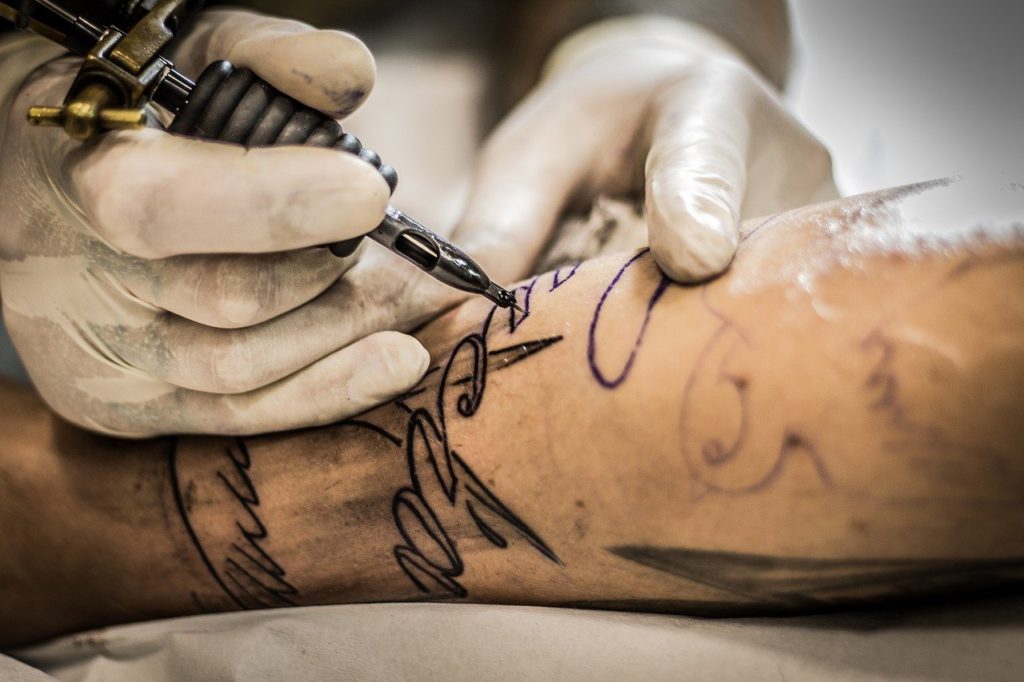Introduction
To have a piece of art or a word engraved on one’s body takes in a lot of commitment, and this dedicated engraving pushes one to think whether or not tattoos, permanent or otherwise are eligible for protection under the Indian Copyright framework.
In accordance with section 13(1) of the India Copyrights Act of 1957, which governs the artistic work domain, Tattoos are, in fact, copyright-protectable artwork. This shall remain true as long as a fixation to a real object is found (here, the human whose skin is being engraved can be taken into consideration as the real object).

Can Tattoos Infringe Copyright?
Realistically speaking, some tattoos more often than not, intentionally or otherwise, infringe on a wide array of intellectual property rights. This is because most tattoos are at the very least, derivative. A form of relief that comes in for the copyright owners is that they must demonstrate that the duplicated work has a negative impact on their work’s worth or prospective market.
For instance, imagine a scenario wherein a tattoo artist, tattoos a famous cartoon character from say Rick & Morty, onto a client without first receiving permission from the original illustrator. Here, it can be argued that this seemingly small infringement could potentially hurt the character’s potential market, as the illustrator herein may sell his drawings to other tattoo parlours for repetitive use on other customers, something which cannot be permitted.
However, the client, on the other hand, is less likely to be regarded as infringing the product because his presentation of the work is usually not for profit and would not, in most situations, alter the work’s value or market.
Who Owns A Tattoo?
Now that we have established that tattoos fit broadly into the category of artistic work and are deemed worthy of protection within the country’s copyright framework, we also need to determine who shall actually own the said copyright over the artwork thus created. Will it be the illustrator carving the tattoo or will it be the bearer who came up with the original idea for the tattoo?
Unless otherwise agreed, in unison with section 17 of the Indian Copyright act of 1957, the first owner will always be the author of the artistic work, which means that the tattoo artist is regarded to own the copyright, rather than the tattoo bearer. By extension, the authority to regulate, promote, replicate & exploit the said copyright shall reside with the tattoo artist.
Painters, like everyone else, make art and have the right to copyright it in order to protect their work. Similarly, tattoo artists create art and have the right to protect their work. Furthermore, unlike in the case of art collectors, the tattoo bearer may merely own the piece of art, with the copyrights to the designs remaining with the tattoo artist, and a certain amount of royalty may be reimbursed to the artist in the event that the piece of art is replicated or reproduced on other media.
Potential Pitfalls
The issue of tattoos presents public policy problems since it has the potential to give the artist complete authority over his or her artwork, which will include the person who is glued to or painted on with it, which roughly translates into that if an artist enjoys total autonomy on his/her artwork through a tattoo, he or she may also be able to control its recipient.
For instance, imagine someone as famous as Dwayne ‘The Rock’ Johnson, who, due to a potential copyright conflict, is compelled to be unable to appear shirtless in public. As he is a person who is known for his muscular body and works featuring him often showcase him in his tattooed glory, this will affect his career and life.
The tattoo artist who engraved the famous tattoo on his chest might limit the visibility of public display of his artwork without his prior approval, if he/she is granted exclusive rights to duplicate, make derivative works, distribute copies, and publicly exhibit the tattoo.
Furthermore, if ‘The Rock’ refuses to cooperate with the tattoo artist, he may be accountable to the artist for monetary damages, and having him refrain from making public appearances could have a negative influence on his wages if he is someone whose considerable revenue is earned from such appearances.
Moral Rights
Section 57 of the Indian Copyright Act stipulates that the author of a work is entitled to moral rights, as well as commercial rights.
Herein, the right of integrity is of particular importance, as legal action may be taken by the author of a piece of work in the event that it is altered in any way that harms, honor or reputation. Notably, an architect once sought to prevent the demolition of a building he had created, arguing that the loss of his creative output would harm his reputation, and in this case of Raj Rewal vs UOI, the court exclaimed that which cannot be seen cannot harm the author’s reputation.
This can be seen as, section 57 does not explicitly ban the removal of a tattoo, hence it cannot prevent a tattoo bearer from concealing or removing the tattoo altogether.
Conclusion
Intellectual Property law is still being refined and revised to account for the theories of intangible work, and it’s through non-conventional works such as tattoos that we gain a greater understating of the core concepts of the law. Copyright is a complex morass of author, owner and moral responsibilities and privileges, and we can look forward to moving towards a more streamlined and cohesive framework in the future.
Author: Ayush Agrawal, Legal Intern at PA Legal.
In case of any queries, kindly contact us here.